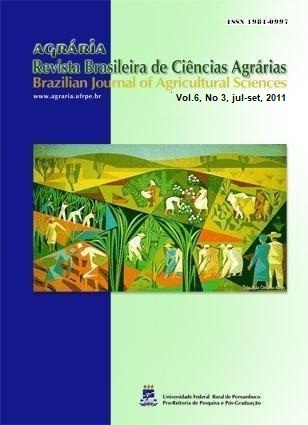Larval development and females weight influence on Nile tilapia fecundity
DOI:
https://doi.org/10.5039/agraria.v6i3a1396Keywords:
Oreochromis, post-larvae, embryogenesis, reproductionAbstract
The success of the subsequent stages of Nile tilapia cultivation is directly related to good reproduction practices of the species, once they depend directly on the quality of post-larvae produced. This study aimed to evaluate the development of Nile tilapia in an artificial incubation system and the correlation between the quantity of eggs and the hatched percentage with the total females weight distributed into three different weight classes in grams (200 – 400, 400 – 600 and 600 –1000). The complete larval development of the species was recorded by digital imaging and, nine days after the artificial incubation of the eggs, the yolk sac was already completely consumed and the initial orange color was already replaced by the species characteristic silver color, determining the beginning of the post-larvae phase. There were no statistically significant differences (P > 0.05) between the survivals means of the post-larvae obtained from females between 200 and 400 g nor between 400 and 600 g, but both were significantly higher than the mean survivals of the post-larvae obtained from females between 600 - 1000 g. Thus, after nine days of artificial incubation, the exogenous feeding of Nile tilapia can be initiated, and the females between 200 and 600 g are more indicated for use in commercial hatcheries of tilapia.



